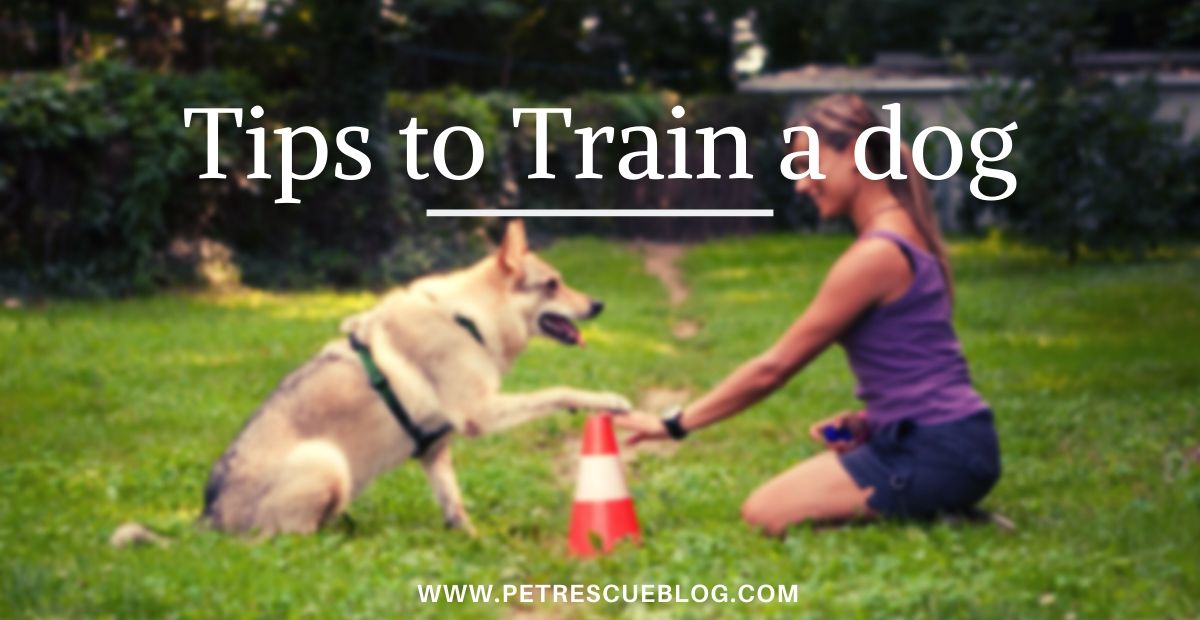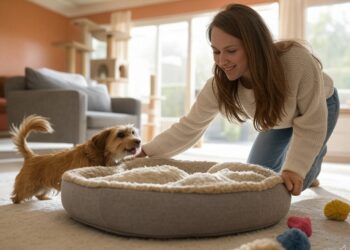In this article
- Success is determined by your dog!
- Know what you want
- Look at what is going well!
- Management is your friend
- Do not set the bar too high
- Look at the situation
- Build in routines
- Listen to your dog
- Making mistakes is allowed!
- Ask for help
- Final thoughts
A dog does not learn very differently than we do. If behavior is successful then it is repeated. However, success is something we can argue about for a long time. What we find successful as supervisors is not always the same as what dogs experience as a success. Here are 10 tips for an obedient dog.
And there you come to the very first tip:
1. Success is determined by your dog!
Look for treats and games or toys that your dog absolutely loves. And by great I mean that he eats your fingers on it or you won’t leave it alone when you have the toy. Throw the normal dog training treats out of the window and let your dog choose! Cheese, sausage, dog sausage, sausage, minced meat, chicken fillet, frikandel….
Go crazy and let your dog tell you what he loves. That will be your reward for your dog. The dry lump or pat on the bulb may not feel like a success for your dog. Your dog indicates what is rewarding, so successful.
2. Know what you want
If you are going to welcome a puppy or replace in the house or even if you already have a dog at home, it is super useful if you know what you want from your puppy. By making a list of things you want you can also practice to get that done.
Important: Make a list of behaviors that you would like to see and not a list of what you do not want !! The first you influence through training and management and the second you actually follow the facts. However, it is never too late to make your list of ‘desired behaviors’ and you can always start learning desired behaviors.
You start by changing your own behavior and how you look at things.
3. Look at what is going well!
By paying attention to everything that your dog does well, you have many chances to reward. Is your dog lying somewhere quiet while you make a sandwich? Reward him with voice and goodies where he is. You are then stimulating the behavior of lying down quietly, because that provides something for your dog.
Does your dog still have its feet on the floor when you greet a friend? Reward!! Do not wait until things go wrong, but immediately reward this controlled behavior. Standing on four feet is then the behavior that yields the most and which will be repeated. Everything that gets attention is reinforced.
You will therefore understand that focusing on what is not going well does not create a pleasant atmosphere and becomes more, so by focusing on the desired behavior, listening will become better and better.
4. Management is your friend
Learning behavior with your dog is super easy if you know what you want and if you know what your dog experiences as a reward. But sometimes it’s just that you can’t pay attention. At that time it is important that you have the situation under control so that undesirable behavior is prevented.
Are friends coming to visit and do you want to practice with ‘four feet on the ground’ when greeting? Then make sure that your dog cannot come to your visit without being there and you are ready with your rewards. Also make sure your visit is aware of your rules: do not pet unless there are four feet on the ground.
Good management ensures peace for you and your dog.
5. Do not set the bar too high
Your dog cannot do well in one go. Just as we have learned to read in stages (letters, three-letter words, five-letter words, short sentences, long sentences and then stories only), the same applies to your dog. Divide the ultimate goal into small pieces and teach your dog step by step what you expect from him.
When training dogs, learning what you want cannot be achieved in one go. It takes as long as it lasts , and you will have to be busy with it at different times. ‘Big steps home quickly’ often means that you are not getting exactly what you want.
6. Look at the situation
Every dog learns situation-dependent. If your dog can walk well without pulling in your street, that does not mean that he can do it in the middle of a new park. In new situations, it works to take a step back and reward it a bit more. That way your dog can learn that the rules are the same everywhere, but you also give him the chance to learn.
7. Build in routines
By building in routines for your dog in your daily activities, you can teach your dog what the intention is without too much hassle. Waiting at the door is something that is very easy. Teach your dog that the door will only open if he stands still or sits down.
Reward the right choices with goodies so that it motivates your dog to wait. Because going outside is also a reward so it is not obvious that your dog will wait quietly at the door. Waiting in the car when the door opens is the same: it must give your dog something to do it, otherwise bouncing outside will be the reward he will choose.
Be consistent, be predictable, and you will see that certain things will happen all by themselves.
8. Listen to your dog.
Make sure you immerse yourself in the dog language. Every dog communicates with us. However, they cannot do that in our human language. They use their bodies to make clear how they feel and what they want.
Thus wag mean many different things, not just that the dog is happy or friendly. A subtle look away or backwards is a signal that your dog would rather not be in that situation. There are many things that your dog can tell you when you learn to speak his language.
By listening to your dog you will find that it will be easier the other way around. Your dog will feel seen and supported by you, making your bond even stronger.
9. Making mistakes is allowed!
You must have heard it before: ‘you learn from your mistakes’. This applies to both you and your companion for your dog. Making mistakes is not the end of the world, so treat yourself and your dog in a relaxed way.
Does your dog slip outside? Does he jump up once after a whole week, remaining well-behaved with four feet on the ground? Do not worry. Just start working on the behavior that you want. Look again at your training plan and at your management strategy in certain circumstances and you can quickly forget the error with a small adjustment. Laugh about it, take a deep breath and just continue practicing again.
You need a lot of patience, humor and perseverance when raising and training dogs. And mistakes? We all make that once, so do you and your dog.
10. Ask for help
If you run into a problem or if you have no experience with raising and living together with a dog, then look for a good, professional trainer who can help you. Look for a trainer who works on the principle that you reward desired behavior and prevent or reverse unwanted behavior.
A trainer who works on the principle that your behavior is taught in small steps that give your dog every opportunity to be successful. That way you can be sure that you are well on your way. The neighbor of three houses behind it can mean well, but dog training is also a profession in itself (even though there seem to be a lot of people who say they are experts).
Final Thoughts
Raising a dog never comes naturally but if you are well prepared and know what you want then it does not have to be very difficult. Enjoy the process of learning together, that makes the difference. Look at what is going well and you will find that you enjoy your dog more. The sky is the limit in what you can learn together: have fun together!







